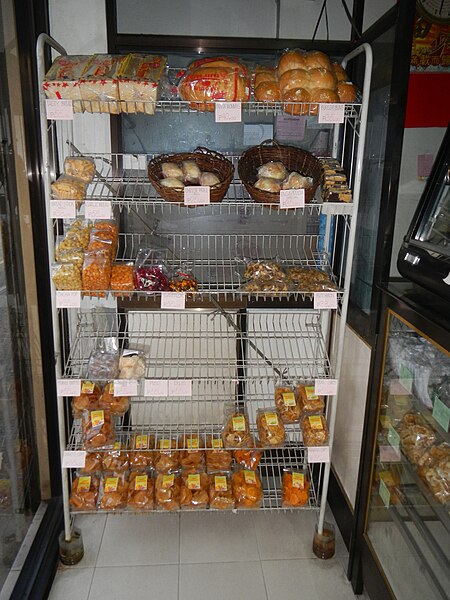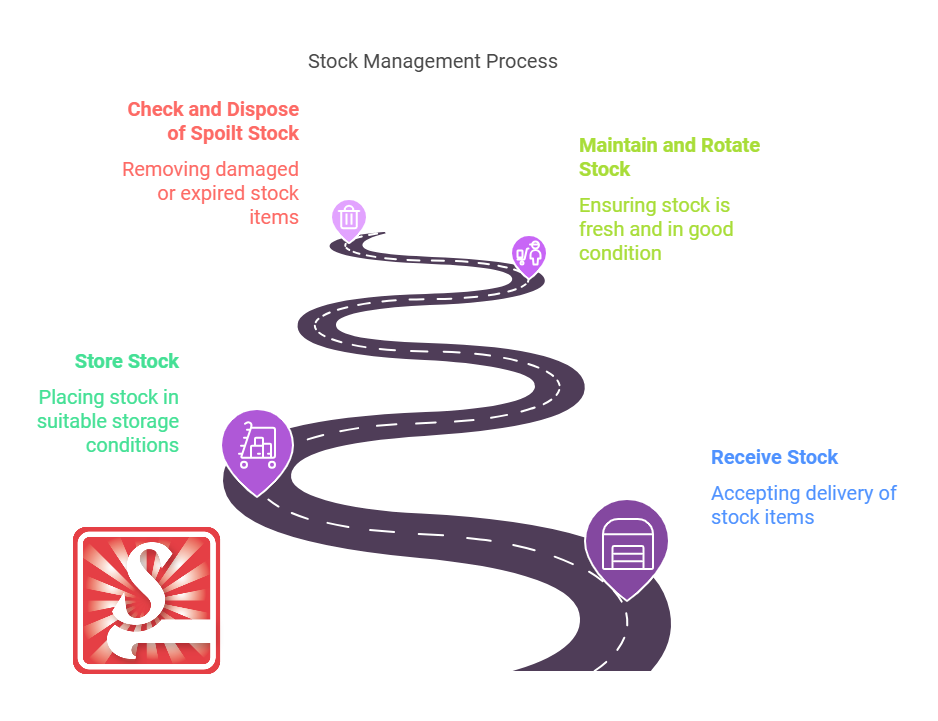Preventing Food Contamination in Receiving, Storing, and Maintaining Stock
Posted by SkillMaker in Jan, 2025
What is a concise description of food contamination when receiving, storing, and maintaining stock?

Food contamination in the context of receiving, storing, and maintaining stock involves the improper handling, storage, and management of food products, leading to the introduction of harmful bacteria, chemicals, or physical objects that compromise food safety. Ensuring hygiene and proper temperature controls are vital to maintaining stock integrity in hospitality and catering environments.
Why do people in enterprises need to prevent food contamination when receiving, storing, and maintaining stock?
Preventing food contamination is critical to protecting consumer health and ensuring compliance with food safety regulations. It prevents foodborne illnesses, reduces waste, contributes to operational efficiency, and upholds the enterprise’s reputation. Maintaining stringent control over food quality safeguards brands against liability and enhances customer trust.
“Preventing food contamination ensures customer safety and loyalty, contributes to effective stock management, and preserves the integrity of the hospitality and catering industry.”
What are the key components or elements of preventing food contamination?
Key components of preventing food contamination include:
- Proper Receiving Practices: Inspecting deliveries for damage, spoilage, and correct temperatures.
- Safe Storage Methods: Correct shelving, separation of food types, and consistent temperature monitoring.
- Hygienic Handling: Training staff on handling procedures to minimise contamination risks.
- Regular Inspections: Assessing inventory conditions, checking expiration dates, and monitoring storage environments.
- Effective Stock Rotation: Implementing FIFO (First In, First Out) to minimise spoilage.
What key terms, with descriptions, relate to preventing food contamination?

Registered Trademark®
- Cross-contamination: The transfer of harmful substances between foods, surfaces, or environments.
- Temperature Control: Maintaining food within safe temperature ranges to prevent bacterial growth.
- Food Safety Standards: The legal and industry requirements for maintaining food hygiene and safety.
- FIFO (First In, First Out): A stock rotation principle ensuring older stock is used first.
- Spoilage: The process of food deteriorating to an unsafe or undesirable condition.
Who is typically engaged with preventing food contamination in hospitality and catering?
Kitchen managers, food safety officers, chefs, and store personnel are responsible for preventing food contamination. They must work collaboratively to uphold safety standards during all stages of stock handling and management to ensure food served to customers is safe and of the highest quality.
How does preventing food contamination align or integrate with other components of Hospitality and Catering?

Preventing food contamination is essential for maintaining high service standards and operational excellence in hospitality and catering. It underpins menu planning, food preparation, and customer service, ensuring safe dining experiences. Rigorous practices also enhance inventory management and profitability, supporting the broader goals of the business.
Where can the student go to find out more information about preventing food contamination?
- Food Standards Australia New Zealand
- Safe Food Production Queensland
- Food Safety – Victoria State Government Health
What job roles would be knowledgeable about preventing food contamination?
Roles include:
- Food Safety Supervisors
- Chefs and Cooks
- Quality Control Inspectors
- Inventory Managers
- Kitchen Hands
What is preventing food contamination like in relation to sports, family, or schools?

Preventing food contamination is similar to a sports team maintaining strict disciplines in practice to avoid injury and perform optimally. In a family context, it’s akin to implementing clean and safe routines to keep everyone healthy. For schools, it reflects the importance of ensuring a secure and sanitary environment for effective learning and development.
(The first edition of this post was generated by AI to provide affordable education and insights to a learner-hungry world. The author will edit, endorse, and update it with additional rich learning content.)


 Post Tagged with
Post Tagged with